Motorcycle Investor mag
Subscribe to our free email news
Twin-cam Titans
(Jan 2023)
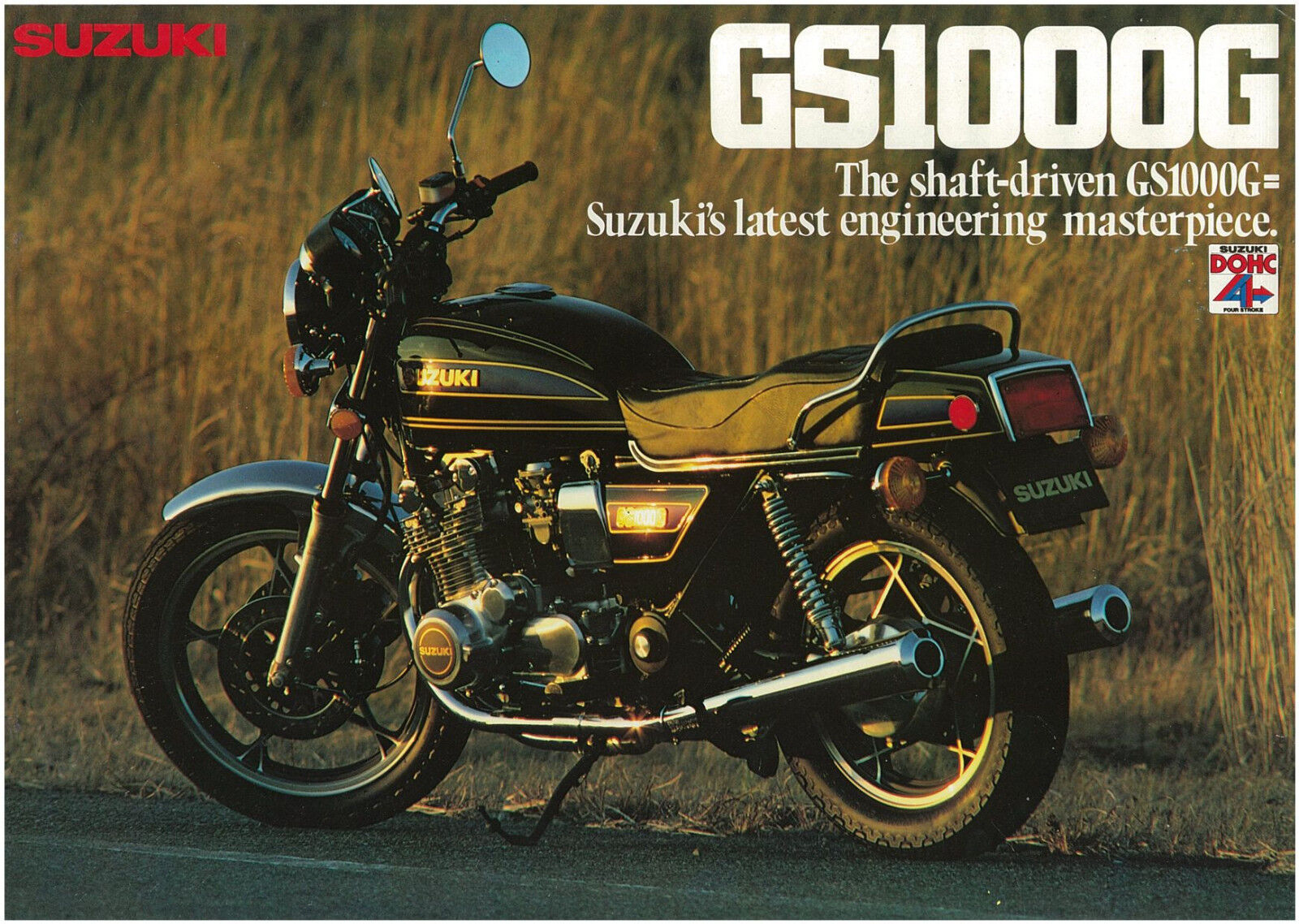
Suzuki's four-cylinder GS series was not only a new
benchmark for the brand, but the industry as a whole.
Guy 'Guido' Allen takes a look
(Ed's note: It's worth clarifying that we're talking exclusively of the two-valve series. Suzuki's four-valve GSX series was also designated GS in the USA, which often causes confusion. We have several stories on the latter – linked at the end of this feature.)
The fact Suzuki was relatively late to the big four-stroke party may have worked in its favour. While Honda's CB750-Four from 1968 and Kawasaki's Z1 900 from 1972 were the ground-breaking 'superbikes' from Japan, it wasn't until 1976 that Suzuki launched it's first big four-stroke, the GS750E (below). Just as an aside, it launched a GS400 twin the same year.
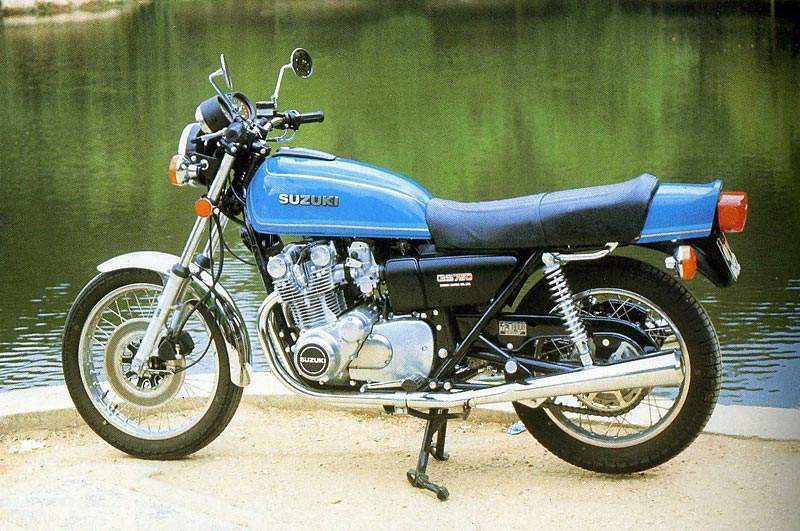
While Suzuki missed out on the notoriety of launching the biggest and the best the soonest, you could argue it benefited from being able to sit back a little and watch and learn. The GS quickly developed a reputation for being a very capable handling package for the day, while blessed with a willing engine. Not cutting edge, perhaps, but a better-than-average package.
The recipe was familiar, even then: An air-cooled inline four running a roller bearing crankshaft, two valves per cylinder, double overhead cams and four carburetors. That was tied to a five-speed transmission with chain drive.
Performance stats were pretty good: 72hp (54kW) at 8500rpm and 60Nm at 8250, for a dry weight of 223kg. That might suggest a powerplant that was a little high strung, but the reviews of the day said otherwise. It was regarded as a punchy and user-friendly package.
Like the engine, the chassis was conventional for its time: Twin loop steel frame with non-adjustable fork up front and preload-adjustable twin shocks on the rear, plus a disc brake at each end. Its chassis was credited to Hisashi Morikawa, whose career credits included the RE-5 rotary and GS1000 series.
Reviewers of the day liked its highway-speed and load-carrying abilities, mentioning that this felt like a roomy long-distance mount. One of the few criticisms was that cornering clearance could be improved.
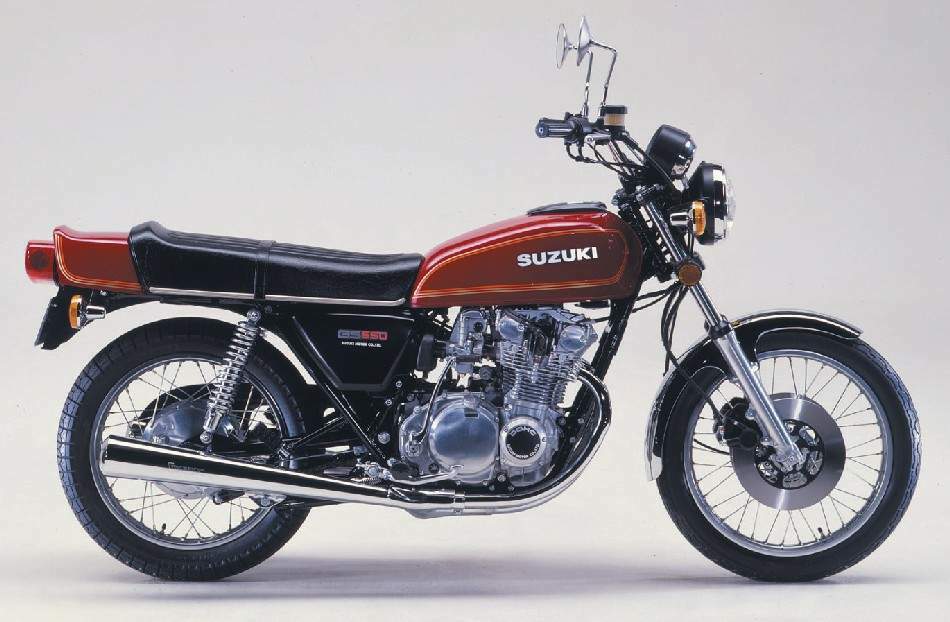
Move on up to 1978 and we get to see two new models pop up on the horizon: The GS550 (above) and GS1000E (below).
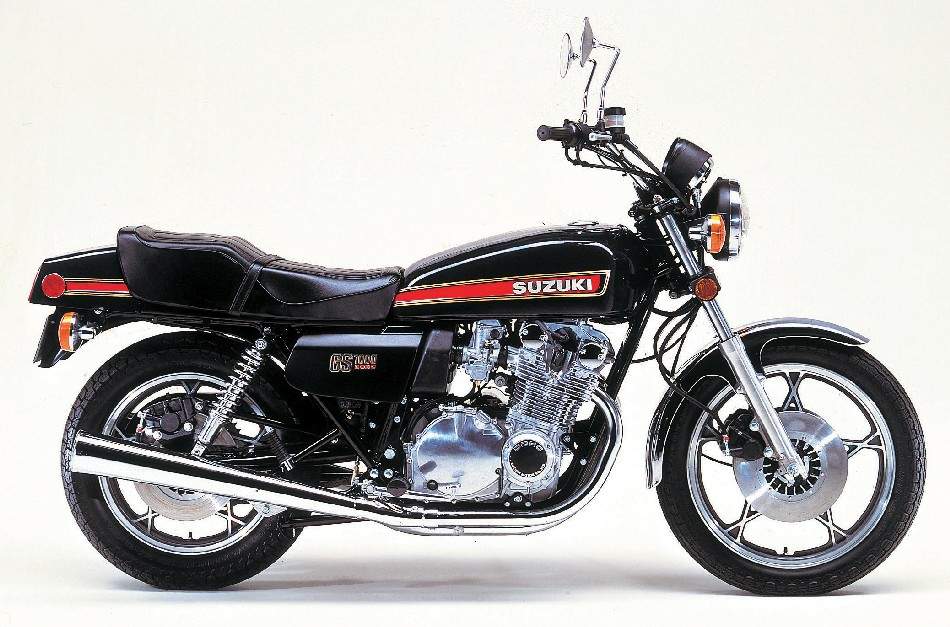
Joining the one-litre club was the next ground-breaking move for Suzuki, and probably the most important. By now we're talking a comfortable and reliable 90hp (66kW) at 8200rpm for the 1000E, with max torque claimed to be 83Nm at a relatively relaxed 6500rpm. This suggested a platform with lots more tuning potential and perhaps more confident engineering.

Move on a year to 1979, and Suzuki has launched the legendary GS1000S – essentially the same platform as the E with identical claims, but with the sexy warpaint and handlebar fairing that talked to the superbike and endurance race efforts in the USA, and Japan, most notably with two-time Suzuka 8-Hour winner and multi AMA superbike victor American Wes Cooley (below).
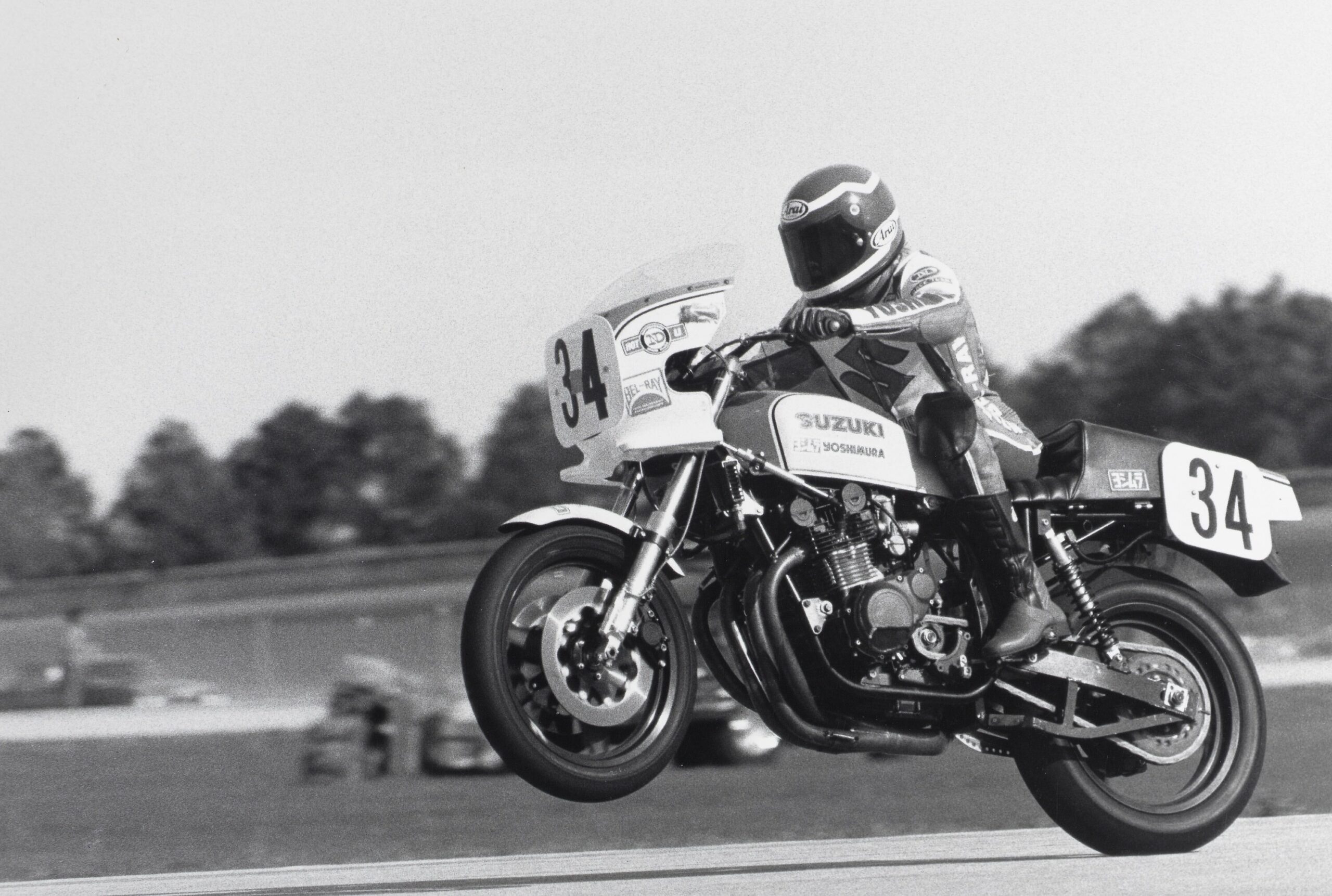
Just as an aside, Cooley's Suzuka victories were with fellow American Mike Baldwin in 1978 and Kiwi Graeme Crosby in 1980.
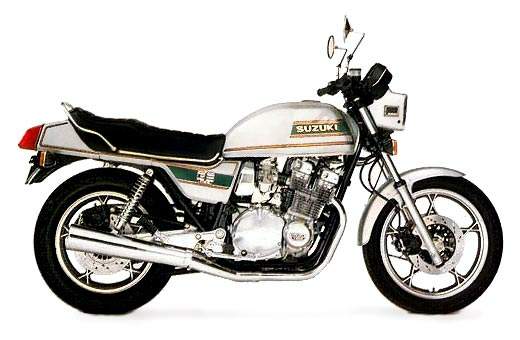
And this was the turning point for the GS series. Suzuki had been working on a new engine, namely the four-valve GSX with its much-publicised twin-swirl combustion chambers, aka TSCC. In 1100 form (above), it claimed an overly-modest 100 horses and was quicker and more flexible than the 'old' GS and was to be the new hero or sports engine series.
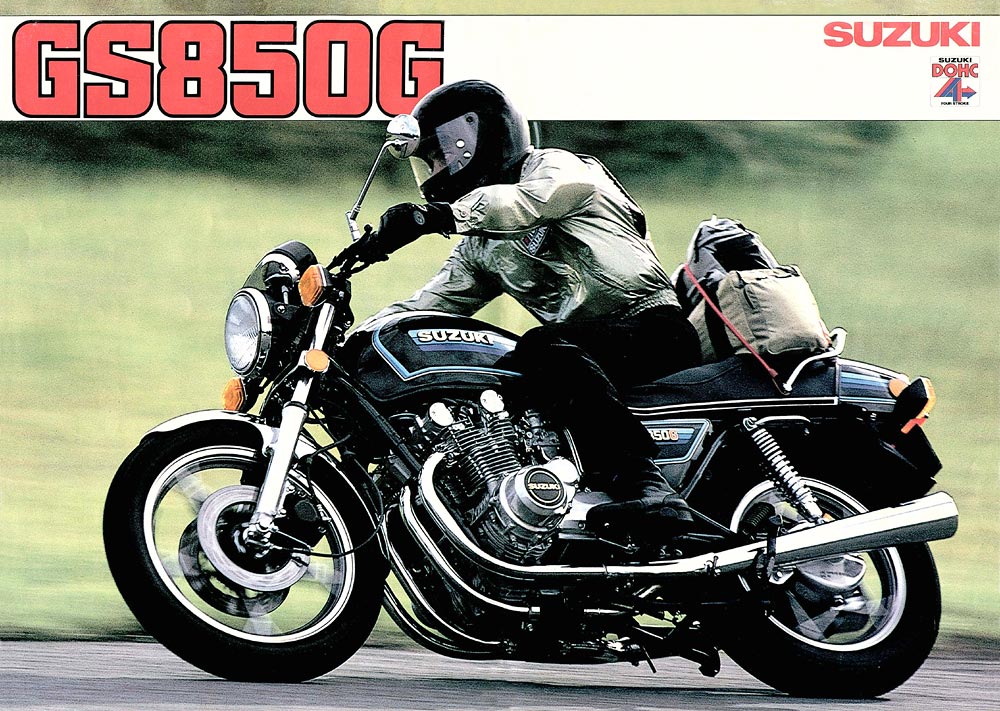
In turn this relegated the larger capacity end of the GS series to all-rounder status, which meant it was now to run side-by-side in showrooms with the four-valver, and featured a more touring-oriented shaft drive instead of chain.
So if you walked into a fully-stocked Australian showroom circa 1981 and later, you were presented with four-valve GSX750 and 1100 sports bikes, GS850G (above) and GS1000G all-rounders/tourers. A GS1100G (below) was to come a couple of years later.
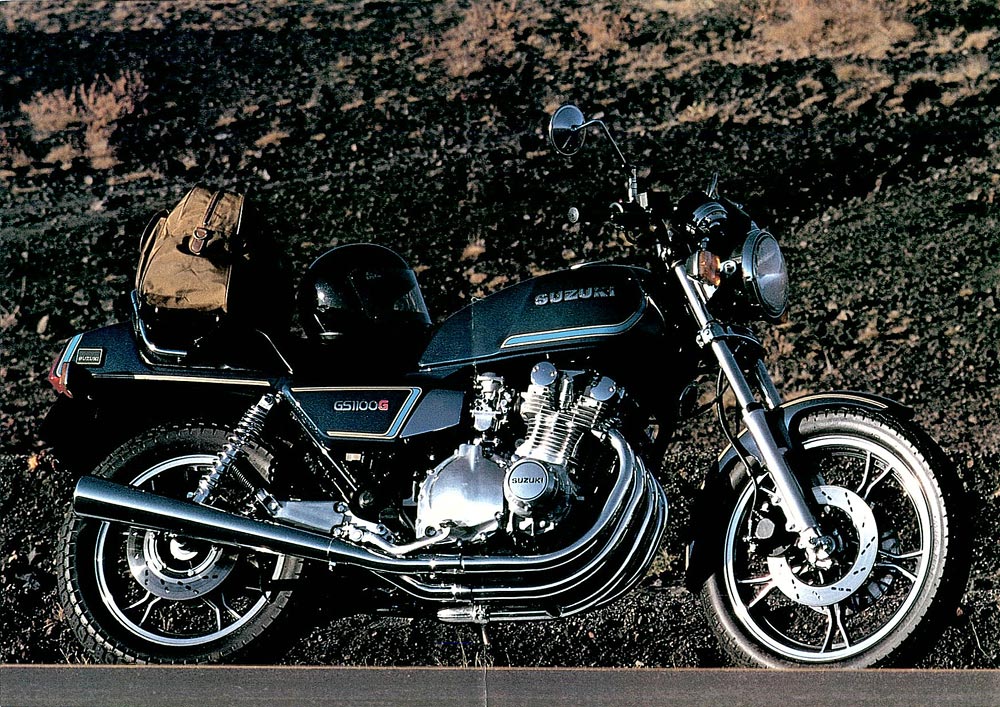
To the untrained observer, this would seem like the old two-valvers were relegated to also-ran status. Weirdly enough, it did the opposite. The addition of shaft drive to the engine series was the making of them, as Suzuki was then producing some of the best transmissions and final drives in the world. They were smooth, had minimal torque reaction on and off the throttle, and remained quick enough to be taken seriously.
What this meant was a GS1000G in the early eighties might have been back a few pegs on the outright performance ladder, but did a bunch of things that were not to be underestimated. It still had the claimed 90 horses and the basic chassis that gave big Suzukis a good reputation for handling. The shaft drive subtly changed what they did, and added some weight (about 10 kilos, according to the stats of the time), but the effect was minimal.
Lets look at some contemporary shaft-driven big bikes: The GS series was far more neutral in its handling and general behavior than equivalent BMWs and Moto Guzzis. Both brands had other virtues, and produced very different animals.
Compared to a Gold Wing of any model up to that point, the GS1000-1100G was downright nimble and a far better handling package. The Yamaha XS750-850 triples had a pitch at the market, but fell short in performance and handling. That gap reduced considerably with the launch of the rightly legendary and near-unkillable XS1100 four, though handling remained an issue.
Kawasaki probably got closer than any other maker with its relatively short-lived Z1000ST.
There are probably some oblique and borderline unfair comparisons in there, but it highlights the point that the big GS-G series was not to be underestimated.
As you might have gathered by now, it's easy to be a fan of the series, particularly the 1000-1100 versions. In good shape, they offer decent performance, acceptable handling up to eight-tenths and a great all-round package.
By current standards the chassis is ordinary. But for the time the inclusion of decent suspension (with adjustable rebound damping and preload on the rear) was welcome. Fuel range was good and the seats on the 850/1000/1100 group remain among the best ever made for long-distance comfort.
Reliability is excellent. This series has a reputation for developing mild big-end knock, but the wisdom of hindsight says it's best to ignore it unless it sounds catastrophic. I've yet to hear of one actually letting go.
Valve lash adjustment is by shim over buckets, which is do-able at home but a pest. (The GSX fours used screw-and-locknut, which was easier.)
The GS1000S series has become very collectible and valuable, with a good one now worth circa Au$20-25,000 (US$14-17,000, GB£11-14,000).
Long regarded as the poor cousins, the GS1000G series is still relatively good value for money. Recent sales in Australia have pitched good to excellent examples at around Au$9-12,000 (US$6-8000, GB£5-7000).
That makes them an affordable user-friendly classic.
Classic Two Wheels has a 1980 comparison test which includes the GS1000S – see it here.
Not the Katana
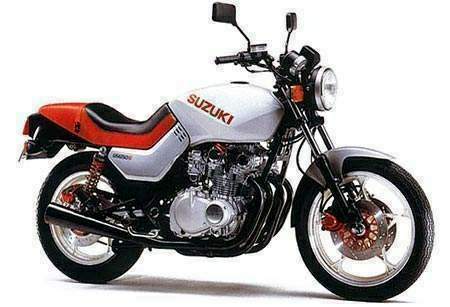
One of the oddballs in the GS range was the GS650G Katana. While pukka Kats were universally four-valve GSX chain-drive units, this mid-sized G shaftie also scored the name.

Know your GS series
Of course there were more variants than we covered here, including a range of cruiser-style bikes.
In general the naming culture includes a suffix that denotes what style of machine it is:
E means it's conventional street bike with chain drive;
S is sports;
L (chain drive) or GL (shaft drive) is a cruiser;
G is shaft-drive all-rounder;
GK is heavy tourer (pictured above).
Our time with GS-Gs
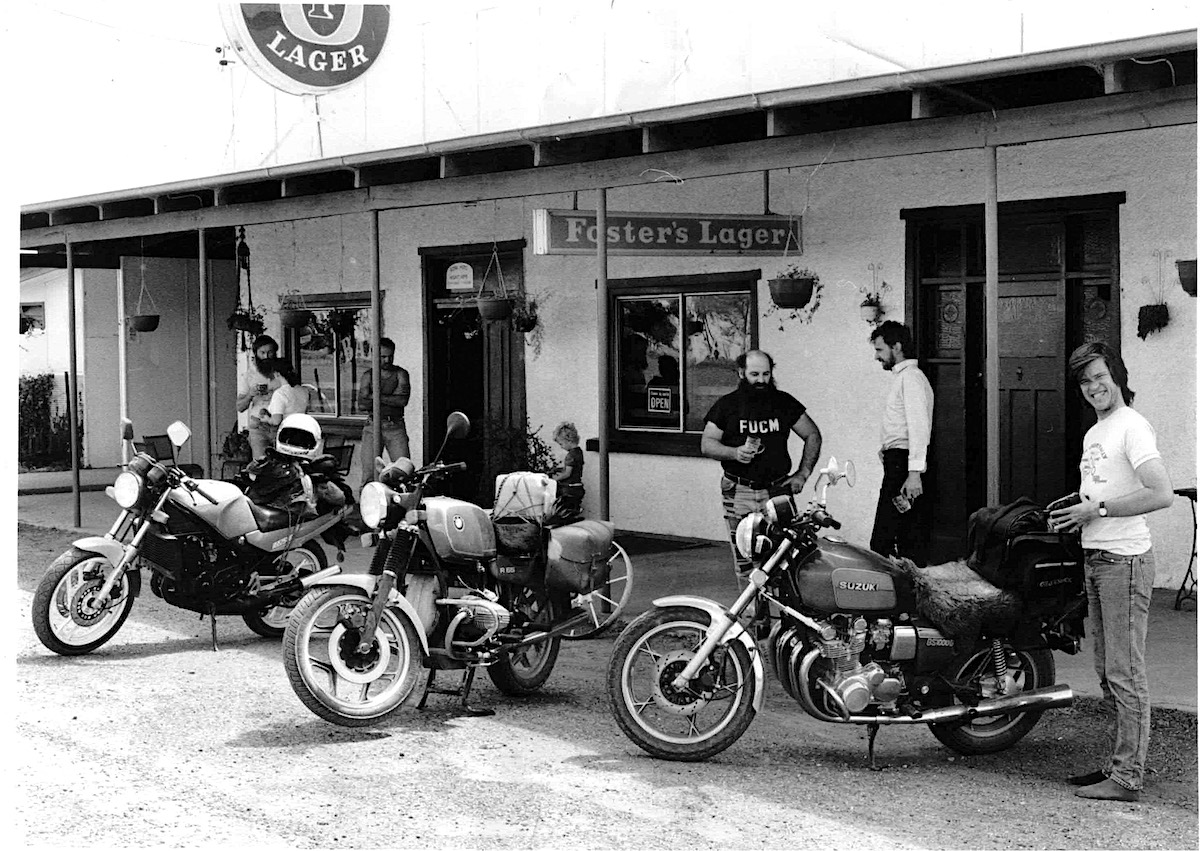
So far, we've owned three: A GS1100G, and two GS1000Gs.
The first was a much-loved road bike which died in a crash many years ago.
As for the two GS1000Gs, one was named Gerald and now lives with the famous Spannerman who recently treated it to a top-end rebuild via Mick Hone Motorcycles.
The other was bought as a solo (pictured above, at right) in the mid-1980s and currently hauls a sidecar (below). The outfit is called Dr Gange, for reasons which deserve a feature...one day...

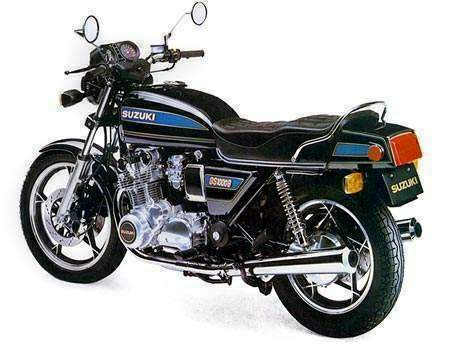
Specs – 1980 Suzuki GS1000G
Good
Quick
Easy to
live with
Comfortable
Bad
Heavy
Not a
lot out of good ones out there
ENGINE:
TYPE:
Air-cooled, DOHC two-valves-per-cylinder, inline four
CAPACITY: 987cc
BORE
& STROKE: 70 x 64.8mm
COMPRESSION
RATIO:
9.2:1
FUEL
SYSTEM: 4 x 28mm Mikuni CV
TRANSMISSION:
TYPE:
Five-speed, constant-mesh,
FINAL
DRIVE: Shaft
CHASSIS
&
RUNNING GEAR:
FRAME
TYPE: Steel twin-loop
FRONT
SUSPENSION: Telescopic fork, nil adjustment
REAR
SUSPENSION: Twin shocks, preload & rebound
adjustment
FRONT
BRAKE: 2 x 295mm discs, single piston
REAR
BRAKE: 295 disc, single piston
DIMENSIONS
&
CAPACITIES:
DRY/WET
WEIGHT: 232/255kg
SEAT
HEIGHT: 808mm
WHEELBASE:
1505mm
FUEL
CAPACITY: 20lt
TYRES:
FRONT:
3.50 V19
REAR:
4.50 V17
PERFORMANCE:
POWER:
89hp/66kW @ 8500rpm
TORQUE:
83.4Nm @ 6500rpm
OTHER
STUFF:
PRICE
WHEN NEW $2050 plus on-road costs
---
GSX series features

GSX1100SXZ Katana
– our bikes + a quick model
profile
-------------------------------------------------
Produced by AllMoto abn 61 400 694 722
Privacy: we do not collect cookies or any other data.

Archives
Contact




